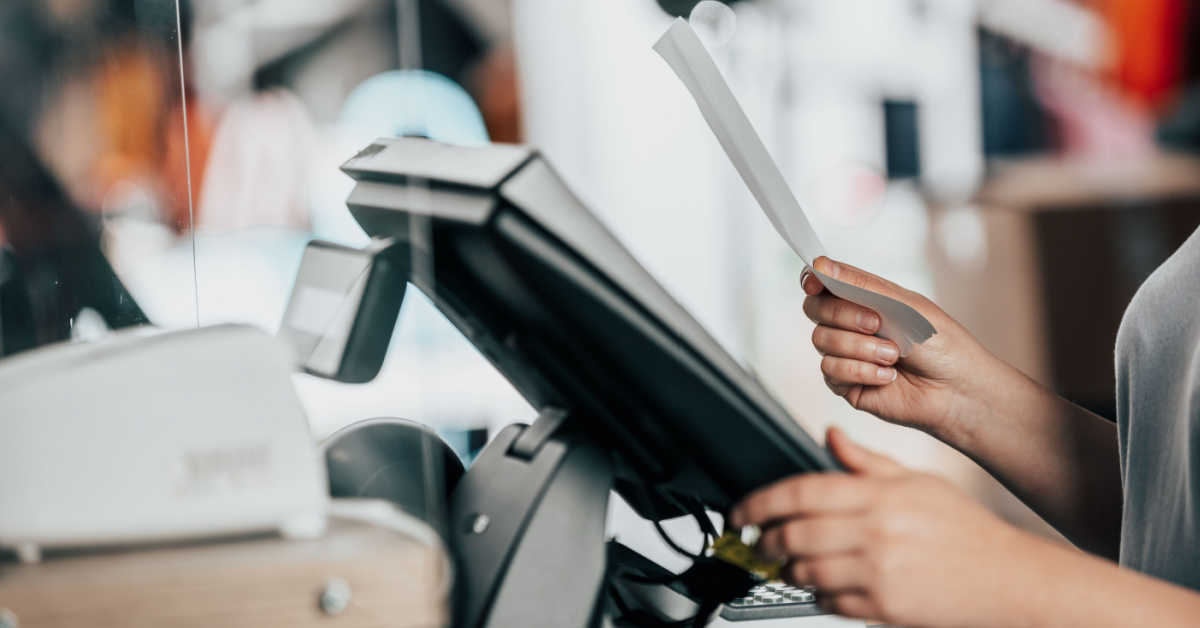Point of Sale (POS) systems are becoming a crucial resource for companies in the retail and hospitality sectors. Although these technologies make processing payments convenient and effective, they are also susceptible to cyber-attacks. A single infiltration can seriously harm a company, including financial loss and reputational harm. Because of this, it's critical for firms to comprehend what POS intrusion is and how to guard against it.

An image of cash register
What is POS intrusion?
A POS intrusion attack's objective is to steal sensitive information from companies who use POS systems to conduct their transactions such as login passwords or credit card details. These attacks can take many different forms, including malware or hacking efforts.
What are the different types of Point of Sale attacks?
POS attacks can take on many forms and can be challenging to detect. Businesses may, however, better defend themselves against these dangers by being aware of the various attack types.
- Skimming attacks: Skimming attacks occur when an attacker places a device on a POS terminal that can collect credit card information from customers. This can be done through physical devices or by installing malware on the system. The attacker can use the data for fraudulent activities or sell it on the dark web after acquiring it.
- POS malware: Malicious software that is particularly made to attack POS systems is known as POS malware. Once activated, the virus may gather sensitive data from the target POS device, including login passwords or credit card information, and transmit it to the attacker.
- RAM scraper attacks: RAM scraper attacks involve the installation of malware that collects data from the system's memory. Sensitive data like credit card numbers may be included, which the attacker may exploit to make fraudulent purchases or market on the dark web.
What are the best practices for protecting against POS intrusion?
Businesses can follow several best practices to protect against POS intrusion and keep their systems and customers' sensitive information safe.
- Use strong passwords: Passwords should contain a mix of uppercase and lowercase letters, digits, and symbols, be at least 12 characters long, and not include your address, phone number, or any other private information.
- Implement Multi-factor authentication: MFA is a security measure that restricts users from accessing a system without presenting two or more forms of identity and should be employed. In addition to a password, this may also involve a biometric element like a fingerprint or face recognition.
- Keep Software Up to Date: Keep POS system software up to date with the latest patches and updates. These updates often include security fixes that can help protect against intrusion.
- Implement firewalls and antivirus software: Antivirus software and firewalls can help safeguard against viruses and illegal access. Keeping these programs current and scanning systems regularly for threats is essential.
- Use encryption: Employ encryption for all data transmissions and store sensitive data in encrypted form. For instance, credit card information can be encrypted to prevent hackers from reading it.
- Monitor systems: Regularly monitor POS systems for suspicious activity, such as unauthorized access or unusual transactions. This can help detect intrusions before they cause significant damage.
Lastly, ensure your systems are secure with multiple defenses: endpoint security, gateway protection, and server authentication. Keep ahead of multi-stage attacks for the utmost data coverage.
Final thoughts on POS Intrusion
POS intrusion is severe and can result in data breach or significant financial losses for businesses and compromise their customers' sensitive information. Businesses must stay vigilant and stay informed about new threats and security measures.
By investing in the proper security measures and following best practices, businesses can protect against POS intrusion and point-of-sale attacks and build a reputation for being a trustworthy and secure company.
With extensive experience with cyber security and IT infrastructure solutions, Sangfor offers a wide range of products and solutions to help your organization stay protected at all times, including POS support. To find out more about the services we provide, contact us today.





